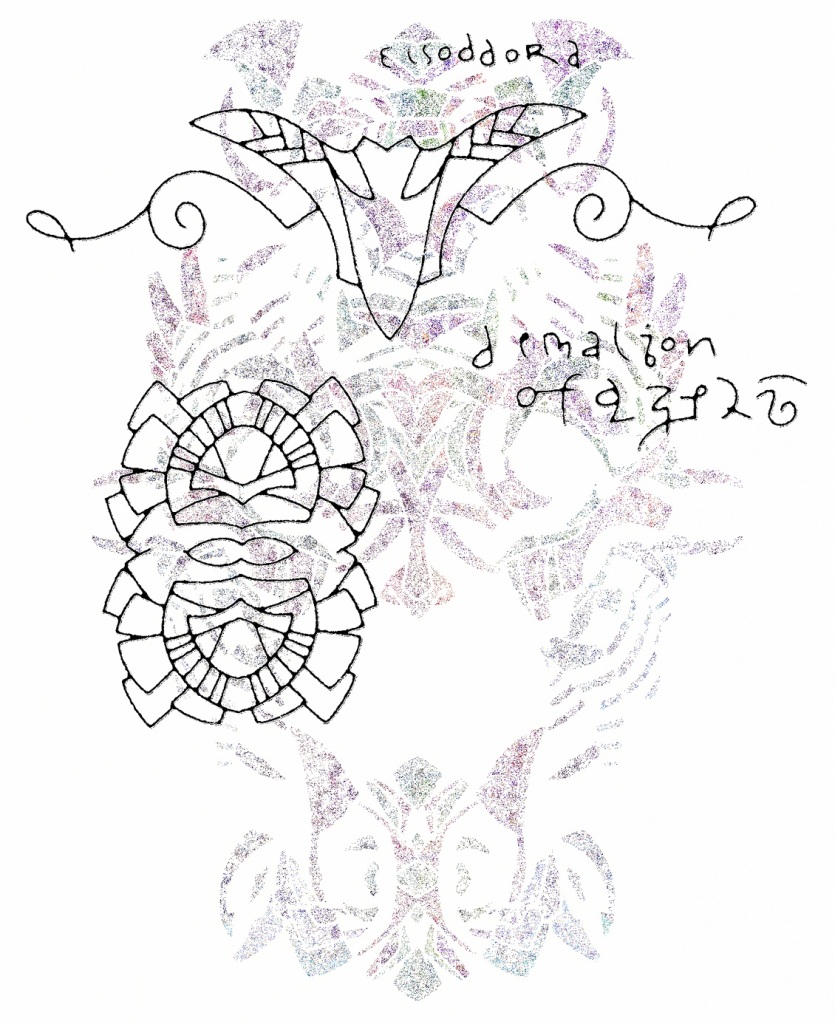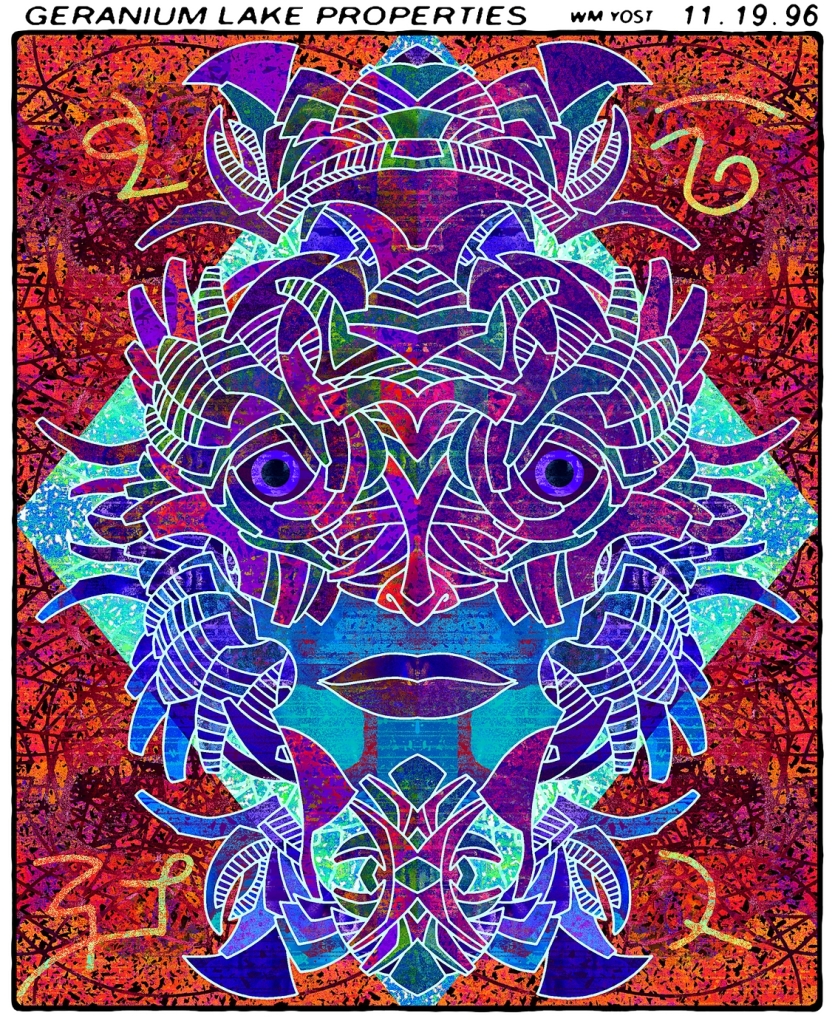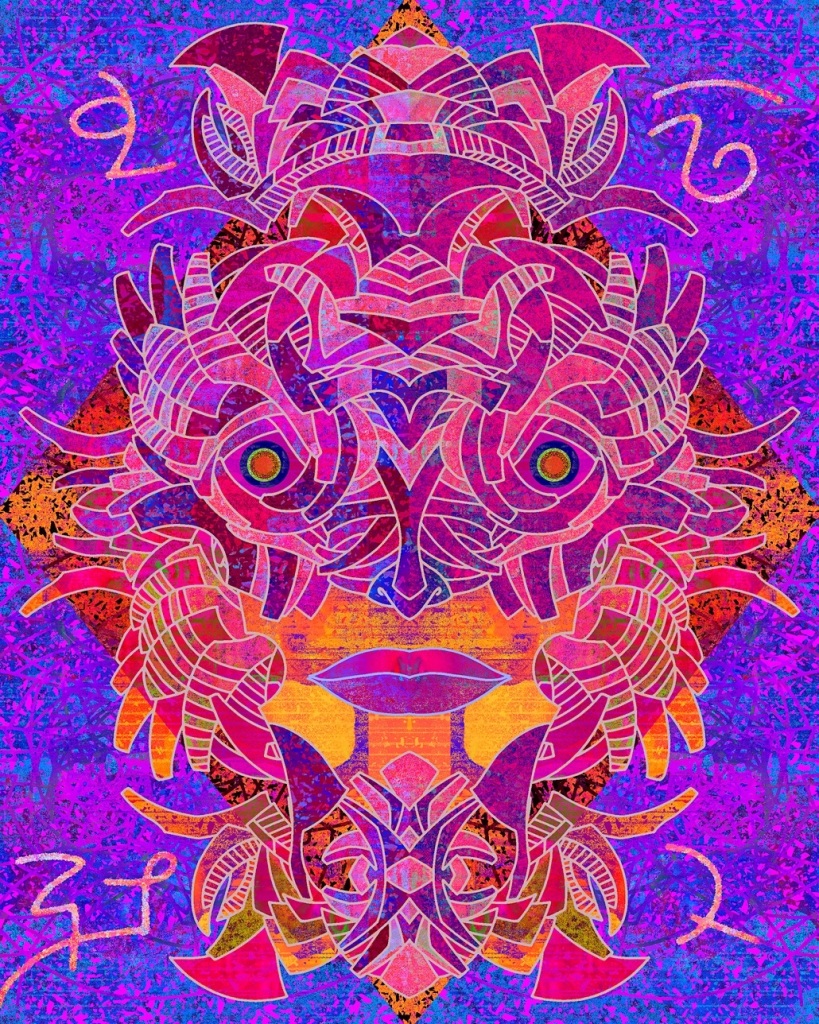
The two Geranium Lake Properties comics in today’s post were not published in newspapers. They were included with six other mask designs in a boxed set of greeting cards printed and sold by Root & Riverhorse Books, the press that also produced the GLP coloring books. The masks had no titles or captions included with the greeting cards, nothing but a small Root & Riverhorse logo printed on the backs of the cards. We know these two GLP comics depict masks of Elsoddora, the demalion of the Seven Ales and Ciders, patron saint of alewives, because Yost wrote her name on the back of the original artwork, and we have an image of that in the archive:

Today is the nineteenth day of the month, and that means you have the option of observing the holiday called Elwonny Biyargamlem, a name that most people shorten to just Elwonny. It can be celebrated on the nineteenth of any (or every) month; the Inultaru will always appreciate the possibility of an extra holiday, for those times when they feel they have worked too much in their everyday routines. In December, some jackalopes include it on their list of Entropic Holidays, while others do not.
Elwonny Biyargamlem can be translated for non-jackalopes as “The Seven Traditional Ales” or “The Seven Ales and Ciders”. The Inultaru are both casual and spontaneous about how they drink or define a cider, ale or beer, but they are as reverent about gutteyka demmelmek (“wife-brewed cider-beer”) as they are about coffee. The nineteenth day of the month is that special excuse to honor the accomplishments of the legendary alewife, Tayarrisu Vudlutta.

The story of Tayarrisu Vudlutta is most likely fictional, or you could say the larger part (at least 65 percent) of the story is fictional and the rest is mythical. She gained renown as the Alewife of the Panbyermog Temple Tavern**, the brewmistress who created the recipes for the seven beverages that can still be found in the homes and alehouse of jackalopes today. The traditional flavors are:
- Pywo – a classic ale flavored with juniper berries, rosemary sprigs and caraway seeds. Some people think it tastes medicinal.
- Panheemut, also called lowberry beer – flavored with blackthorn berries* (sloes) and blackcurrants.
- Tayarrisu Vudlutta’s namesake, tayarri – flavored with the peels and flesh of citrons and pomelos. Bitter or Seville oranges can also be added.
- Green crisp ale – made with pears, apples and mint leaves. People who are not jackalopes might call this a cider.
- Elderflower ale – ale infused with elderflower blossoms.
- Ginger ale – I hope I don’t have to explain this one.
- Suvudu, also called licorice beer – flavored with anise, nutmeg and fennel.

About the Inultarumek usage of the word “wife”:
Wife does not necessarily mean a woman who is married to a man. An actual marriage is rare among the Inultaru; Jackalopian females prefer fiancés, rather than husbands. Someday I hope to make a longer explanation of this interesting cultural divergence.
An alewife does not have to be a married woman, or any kind of a woman. In “The Ollave’s Last Lost Standish”, Jack Loki dreams of his future after his retirement from adventuring. He becomes an alewife and concocts his own collection of seven gutteyka demmelmek. He dreams of a small tavern with two public parlors, a cubbyhole bar, a few rooms upstairs to rent out, and a tiny herb garden.

*Sloes are actually not berries; they’re drupes, or stone fruits.
**Previous to the arrival of Tayarrisu Vudlutta, the Panbyermog Temple was famous as a Den of Iniquity. It was the home for an order of pseudo-monks and charlatan alchemists, who had established a bustling marketplace for working girls, cardsharps, gamblers, players and hustlers of all kinds.